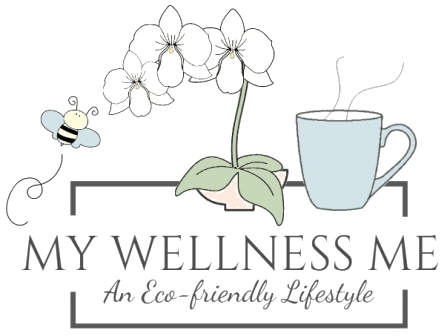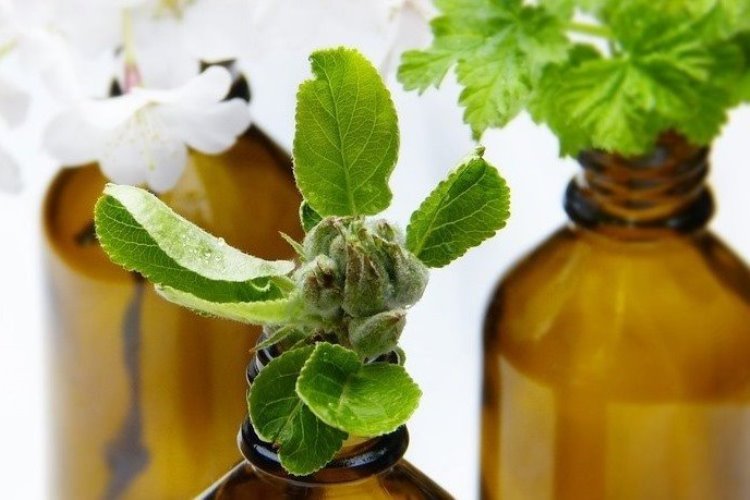It is easy to be overwhelmed by the sea of information on essential oils.
I was.
There were about 150 of them and the list is still growing. I was nervous and excited. These wonderful, great smelling elixirs were available to me at my fingertips.
But there were too many. I was a leprechaun surround by gold. Hmmm… bad analogy. A kid in candy store, then? But children spoiled for choice do not make the best decisions.
And so, the adult that I am, I ignited my laptop and drove information into an empty word document.
Essential oil types.
Botanical names. I did my degree in Botany Honors so this was out of habit.
A bit of history.
Benefit and drawbacks.
Recipes.
Hacks.
Once confident of the research garnered, I began to try them out in my DIY beauty routines, soaps, natural remedies for health, cleaning, hacks. There were very few bumps. The results were great.
And so the information that I am sharing in this article is what I have gleaned after coming in contact with essential oils. At the end of this article I have included an essential oils guide chart for you to download free. Hope it helps you.
What are essential oils?
To begin, essential oils are oddly named!
These oils are neither necessary nor are they a must-buy on grocery lists. Essential oils also contain no fatty acids and the only reason they are called oils is because they are insoluble in water.
Baffling, eh?
They are so named because the extracts are the “essence” of the plant, its fragrance. You get them after a painstaking extraction process, usually cold pressing or distillation.
What’s left is potent, 75 times more so than dried herbs on average. That is why you see them in those teeny weeny bottles. Just two drops of these oils go a long way.
And many plants have natural antiseptic, anti-inflammatory, or antimicrobial properties. So, in concentrated form, some of these oils are extremely useful for acne, sore throats, muscle aches, and much more.
Essential oil uses
Essential oils are commonly used to make cosmetics, incense, perfumes and soaps. Hundred percent natural essential oils are a great replacement for non-green commercial perfumes and a perfect addition to an eco-friendly beauty routine.
Further, they flavor foods and drinks, though some are dangerous. Wintergreen, for instance, is potentially fatal if ingested.
Their anti-bacterial and anti-inflammatory properties have also ensured that essential oils are used to treat a number of health conditions.
But essential oils are most popular in aromatherapy, with a large number of them having calming and anxiety-relieving properties. However, using plants and flowers to freshen things up is not a new development. It was a royal thing to do in the past.
King Louis XIV of France rinsed his clothes in musk and jasmine waters. Queen Antoinette liked to smell of violet. Charlemagne, king of the Franks, preferred rose, while Alexander the Great was partial to myrrh.
And these oils have a truly king-sized future. The aromatherapy market alone is projected at $2.8 billion by 2026.
Can essential oils be taken orally?
You can use some essential oils to gargle but they are still not safe enough to swallow. In fact, some of these oils come in quite handy if you are making a DIY Ayurvedic and natural mouthwash. These days you get essential oils in supplement form that are taken by mouth, which treat stomach issues or help with indigestion. Still, it is always advisable to take the approval of a qualified medical professional before ingesting them orally.
How to sample an essential oil
Essential oils are not perfumes. These undiluted oils can give you a searing headache if you sniff them up close.
So, keep the tester at least about five inches from your nose.
If you are comparing several oils then its best to take breaks between them. The smells can confuse the senses to a point no amount of coffee beans can restore!
Also, some oils may be allergic to specific skin types, so be careful there.
What to and what not to buy
Below are some useful rules of buying essential oils:
- The extraction process of these oils differs and as with most products, some will cost more. The trick is to look at as many oils as possible; if the prices are not too different, there’s a big chance some are synthetic.
- Marketers will try to sell essential oils mixed with vegetable oils. It happens! You can test this by drops on paper. An oily ring means there’s some vegetable essence in there.
- These oils should be stored in blue or amber glass bottles. Unfiltered light through clear bottles can spoil the oil.
- Avoid oils in plastic bottles. Plastic can easily contaminate them.
- As for size, small is best. These oils last long, so buying too much can lead to waste and spoilage.
- On the point of spoilage, store the oils in the cool temperatures of a refrigerator.
- Finally, ensure that the bottle has both the common and Latin names, if you are hunting for a specific type. For instance, there are around 700 types of Eucalyptus, some native to Australia and some to Indonesia.
How to use essential oils
All right now, we don’t want to harp about this but these oils are POTENT! So, typically you’ll need a neutral carrier oil as a base; the popular ones are coconut, avocado, jojoba, olive, sunflower seed, and sweet almond. Use carrier oils even when using essential oils on a bathtub.
Also, do not take them by mouth unless approved by a medical professional.
Essential oils can be important ingredients to make an effective DIY mosquito repellent.
And do not use them on skin if you are allergic. (Do a patch test just to be sure.)
Side effects and precautions
Properly research the following oils before using them: arnica, basil, bitter almond, calamus, cinnamon, clove, fennel, marjoram, mugwort, myrrh , oregano, sage, star anise , wintergreen, tarragon, and wormwood.
That looks quite a list but don’t worry. There are over 150 essential oils and most are not dangerous if used in small doses.
Side effects, if any, will include allergic reactions. The most common of these are skin rashes and irritation, sneezing, and inflammation. Some oils may cause dizziness, nausea and stomach issues.
Others, especially those with the citrus element in them (lemon, lime, orange) are photosensitizing. This means people who apply them on the skin can get sunburn. So, avoid them if you have sun-related skin conditions.
Pregnant women should also stay away from the oils listed above and any other that has not been properly tested. In fact, if possible avoid them all together during the first third of the pregnancy. Unless the doctor gives the go ahead, avoid them even during the nursing period.
Further, asthma patients should not inhale essential oils and those with epilepsy should stay away from essential oils like fennel and sage.
And, if possible, don’t use them on children, especially if they are less than three years old. If you use essential oils, ensure to heavily dilute them with carrier oils.
Popular essential oils and their benefits
For beginners, here’s a list of essential oils and their uses to dive into…
- Bergamot: This essential oil comes from the fragrant citrus fruit, bergamot. It is widely used in aromatherapy and also to alleviate anxiety and treat headaches and skin diseases like eczema.
- Chamomile: Chamomile essential oil is used to improve digestion and to treat skin problems, but it is best known for helping to provide a good sleep.
- Eucalyptus: Besides treating cold and chest congestion, eucalyptus essential oil is a very effective pesticide. It has been known to kill influenza virus particles and the drug-resistant, malaria-causing parasite.
- Lavender: This oil is the gentlest and the most popular essential oil. It is used to treat a range of conditions, from nervousness and anxiety to sleep disorders and body aches. Its aroma is among the most soothing. So much so that Queen Elizabeth I ensured that her royal nightwear was regularly washed in lavender water.
- Lemon: This essential oil comes from the peel of the fruit. It is a popular ingredient in cleaning products because of its ability to cut through grease. Besides, it is good for toning skin and reducing wrinkles.
- Orange: This essential oil is derived from the rind of the citrus fruit. It is used to treat anxiety, stress, constipation, inflammation, and skin conditions like acne.
- Patchouli: This essential oil comes from the leaves of the aromatic patchouli plant. Besides helping to treat skin conditions, stress and headaches, it is also used for dandruff problems. And for aromatherapy, of course. As far back as the 16th century, Shah Jahan, architect of the Taj Mahal, instructed that his jewel-studded suits be kept in shelves scented with patchouli.
- Peppermint: Peppermint essential oil comes from the leaves of the peppermint plant. It is popular in aroma therapy, used for treating headaches and is an effective analgesic.
- Rosehip: This oil comes from a particular variety of rose and is used widely to treat the skin. It is good for acne and dry lips and is deemed to possess anti-aging properties.
- Rosemary: Rosemary essential oil is known to boost the immune system and alleviate stress. The oil is quite a favorite in natural skincare products because of its topical benefits.
- Tea tree: Tea tree essential oil is also known as melaleuca. It is used for fungal infections and dental problems besides treating acne and rashes.
- Spearmint: This essential oil is high in antioxidants, fights bacterial infections and used to treat stomach ailments, such as gas or indigestion.
- Ylang ylang: This oil comes from the flowers of the cananga tree. It alleviates stress and may be effective against high blood pressure. It is also used to treat fever, cold and headaches.
It’s impossible to fit all the available essential oils in one space.
So, what I’ve done is compile an exhaustive list of these essential oils in pdf format and placed them in distinct categories, such as anti-bacterial, anti-inflammatory, photosensitive, etc. The objective is to make it easier for the reader to pick an essential oil for their specific need.
You can avail the list by signing up below.
You can also check out how to use essential oils in removing closet odor, DIY coffee scrubs and DIY cleaning products for home.
Are you just starting out with essential oils? Which are your favorites and how do you use them? Let us know.


4 comments
I worked for a doTERRA essential oils Wellness Advocate for just under a year and learned so much about essential oils, it was fascinating. I agree with you, some of the best ones to start with are Lemon, Lavender and Peppermint as you can use them in so many different ways and they all smell amazing. Loved reading this post, thank you for sharing! Lisa x
You’re very welcome. Thanks for letting me know. 🙂
I use lavender oil to massage before bed. Very calming and soothing. Great breakdown of the others!
Lavender essential oil is one of my favorites too. The other is Tea Tree. Thanks for appreciating the post. 🙂
Comments are closed.